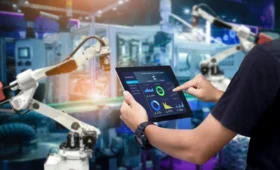The Internet of Things (IoT) is a technological revolution that connects everyday objects to the internet, enabling them to communicate and share data with each other. From smart homes to wearable devices and smart cities, IoT is transforming industries and changing how we interact with the world. This article explores the concept of IoT, its applications, and its potential to shape the future of technology.
1. What is IoT?
IoT refers to the network of physical objects that are embedded with sensors, software, and other technologies, allowing them to collect and exchange data. These objects can range from smart thermostats and smart refrigerators to wearable health trackers and connected cars.
2. Applications of IoT Across Industries
The IoT has a wide range of applications in various sectors:
- Smart Homes: IoT devices like Amazon Echo and Google Nest allow homeowners to control lighting, security systems, and thermostats remotely, creating a more efficient and comfortable living environment.
- Healthcare: IoT-enabled medical devices monitor patient health in real-time, alerting healthcare professionals to potential issues. Wearable devices like Fitbit track physical activity and vital signs, helping users manage their health.
- Transportation: IoT is used in connected vehicles to improve safety and efficiency. For example, vehicles can send real-time data on traffic conditions, enabling smart navigation systems to adjust routes.
3. The Future of IoT: Smart Cities and Beyond
One of the most exciting prospects of IoT is its potential to create smart cities. IoT can help manage traffic flow, reduce energy consumption, and enhance public safety by integrating smart devices throughout the urban environment. For instance, smart streetlights can adjust their brightness based on real-time conditions, while waste management systems can optimize trash collection schedules using IoT sensors.
4. Challenges and Security Concerns in IoT
While the IoT offers vast potential, it also presents challenges:
- Security: As more devices connect to the internet, the risk of cyberattacks increases. Ensuring the security of IoT devices is critical to protect sensitive data.
- Interoperability: IoT devices from different manufacturers often do not work seamlessly together, making it difficult to create unified systems.
- Data Privacy: With so much data being collected, there are concerns about how personal information is used and who has access to it.
Conclusion: Embracing IoT for a More Connected Future
The Internet of Things is revolutionizing the way we live, work, and interact with our environment. As IoT technology continues to evolve, it will create more connected and efficient systems across industries, making everyday life more convenient and sustainable.




